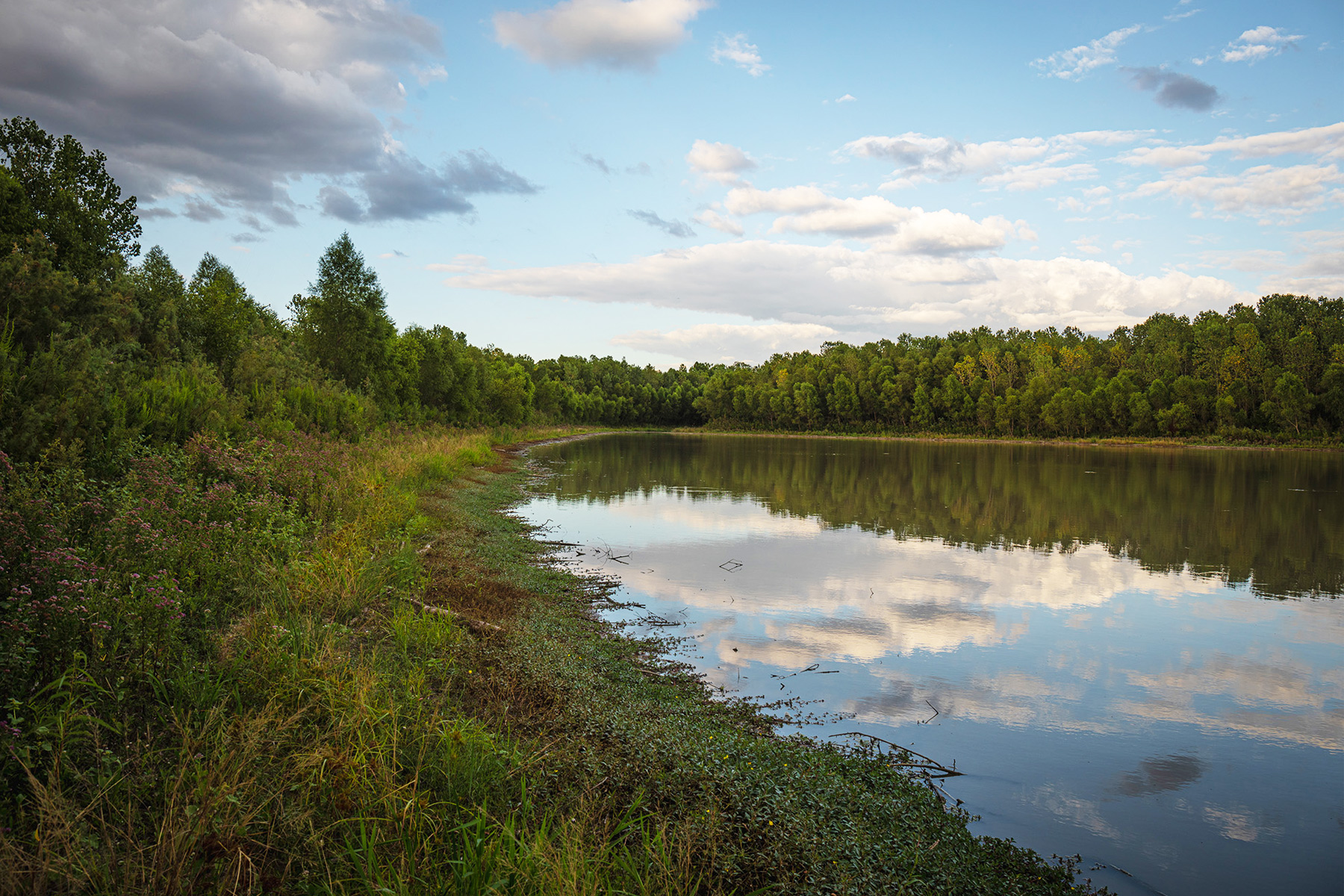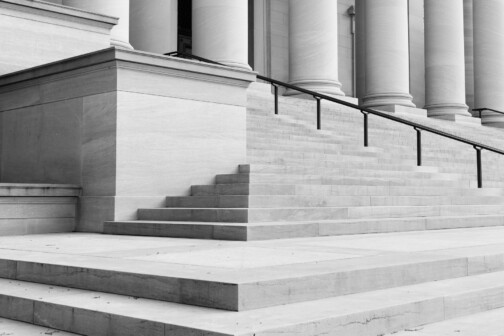In the fall of 2014, Dallas commercial real estate executive Jeff Ellerman was out cycling with his longtime buddy, oilman Larry Dale, when he had an epiphany. “We had meandered through the Design District and got to the Trinity Skyline Trail on the river bottom,” Ellerman says. “It’s beautiful with great views of the city, but it’s a chasm that has separated the haves and the have-nots forever. And we said, ‘This is ridiculous. You have miles of opportunity to the north and the south.’”
Not long afterward, Ellerman ran into Mike Rawlings, the then-mayor of Dallas, and talked with him about the need for an expanded trail system. Rawlings agreed and said it would take a public-private partnership—and thanked Ellerman for volunteering to lead the effort. “Larry and I talked about how good Dallas has been to us from a business standpoint,” Ellerman says. “We decided this would be our gift back to the city.”

Dallas had been working on a master trail system that would connect neighborhoods to transportation hubs and economic centers, and miles of new trails had been constructed. But the plan was missing an overall strategy and some critical links. “It was a spaghetti map of trails that would never get built because the city had no money,” Ellerman says. “It would take private leadership.”
He and Dale figured it made more sense to create an unbroken trail around the city. They formed the Circuit Trail Conservancy (since renamed The Loop Dallas) and pulled together a board that had the wherewithal to make it happen. Founding members were Linda Owen, who led the development of Klyde Warren Park; Joseph Pitchford, managing director of development for Crescent Real Estate (which played a key role in getting the park off the ground); Philip Henderson, the driving force behind the Katy Trail (who passed away last December); Rosewood Property Co. President Rick Perdue; and Dallas investor Mike Terry. In 2020, Pitchford rolled off the board, and Russell Glen Co. founder Terrence Maiden and AT&T executive Vana Parham were added.
With partners that now range from the City of Dallas and TxDOT to Dallas County, the U.S. Army Corps of Engineers, and NCTCOG, the team developed plans for The Loop Dallas. It involves adding 11 miles of new trails to 39 miles of existing trails to create a continuous 50-mile pathway. The first of five planned connectors opened this past May. Two additional links are under construction. The whole project is expected to finish in about three years.
“At this point, 99 percent of people don’t know anything about it, because we’ve kept a relatively low profile and kept our heads down,” Ellerman says. “But 10 years from now, everybody in the entire region will know The Loop. It will be a destination. It will be an active transportation system. It will be a legacy asset for the City of Dallas.”
An Abundance of Obstacles

Before planning could even happen, funding had to be secured. Leveraging their connections, Ellerman, Dale, and other board members raised about $10 million from private donors, including Lyda Hill. The next step was accessing public support. A big win came in 2017 when $20 million in bond funds were approved. All told The Loop Dallas has secured $75 million in public funding, including $10 million from Dallas County and $11.5 million from the Sports Arena TIF, and more private donations for a total of $90 million. The project is expected to cost about $120 million.
A game-changing moment came in 2019 with the hiring of Philip Hiatt Haigh as executive director. Prior to joining CTC, he led the reelection campaign of Dallas County Judge Clay Jenkins and served as director of public policy for the Dallas Regional Chamber, among other posts. He currently is vice chair of TxDOT’s bicycle and pedestrian advisory committee, District 1 representative on the City of Dallas’ Environmental Commission, and a Dallas County Trail and Preserve Program board member.
“I was a little hesitant because it was a new organization that didn’t have any full-time staff,” Hiatt Haigh says. “I was convinced by the reputations of the board members, their commitment to the project, and their expertise. Larry, for example, has a ton of experience with right-of-way issues. He talked us through how to get our first agreement with a Class 1 freight line. With a railroad that has been on the ground for more than 100 years, we were able to steward an agreement to pass a trail underneath their tracks.”
“Our biggest priority once the trails are open is to make sure they are safe and accessible. And that means we want activity on them.”
Philip Hiatt Haigh | Executive Director, The Loop Dallas
Ellerman says he vastly underestimated the challenge of overcoming right-of-way issues. “If you’re dealing with farmland in southern Oklahoma, it’s one thing,” he says. “But we’re in an urban environment building a linear park. There are a million encumbrances and stakeholders—Oncor and all the utilities, the railroads, TxDOT, the Corps of Engineers—the amount of people Philip deals with on a daily basis is astounding. With a 50-mile trail, one right-of-way issue can screw everything up.”
To help fine-tune the plan, The Loop has relied on design consultants TBG, Halff Associates, SWA Group, and Simon Engineering and Consulting. Hiatt Haigh is also focused on programming and working with Friends of the Katy Trail, Friends of Santa Fe Trail, and other such organizations to maintain various sections of trails, which are city-owned. “Our biggest priority once the trails are open is to make sure they are safe and accessible,” he says. “And that means we want activity on them.”
The Loop Dallas also is funding Dallas Off Road Bike Association’s work to operate and maintain Creekside Park, a 50-acre mountain biking area accessible via the Trinity Forest Spine Trail. Located about four miles from downtown near Tenison Park Golf Course and scheduled to open before the end of the year, it will include about five miles of trails and a separate skills park, all geared toward beginner and intermediate riders.
The Loop
The new, 50-mile system will allow riders and hikers to travel from White Rock Lake to the Trinity Forest, around to the Trinity River, and then through the Design District and Victory Park, all without ever leaving a trail.
50
$43M
$42M
5.7M
‘Connecting Dallas with Dallas’
Beyond the recreational opportunities, supporters are hopeful about what the project will mean to the city’s southern sector, as two-thirds of the investments in new trails are south of Dallas. Among the brightest possibilities is what The Loop Dallas is doing near Parkdale Lake. Surrounded by about 110 acres east of Fair Park—closer to the city than White Rock Lake—Parkdale is the largest urban parkland dedication in Dallas since 1937. A joint venture between Oncor Electric Delivery, the City of Dallas, and The Loop Dallas, it allows for the completion of the Trinity Forest Spine Trail and creates a green connection between the neighborhoods there, White Rock Lake, and the Great Trinity Forest. “Our mantra is ‘connecting Dallas to Dallas,’” Ellerman says.
The final phase of the Trinity Forest Spine Trail is a collaboration between The Loop Dallas, TxDOT, the City of Dallas, and Dallas County. To help win federal funds, this component was expanded to include a new Lake June Bridge that connects to two DART light rail stations. “We moved from thinking, ‘OK. How do we make this trail work?’ to ‘Why don’t we stitch back together Pleasant Grove and this area and connect everyone to the forest and to The Loop?’” says Hiatt Haigh.
Economic development possibilities are not lost on The Loop team. One only needs to look at what two high-profile projects have meant for surrounding real estate properties and businesses. Over the past decade or so, estimates put the economic impact of the Katy Trail at $1 billion and Klyde Warren Park at more than $300 billion.

Ellerman, one of the region’s top tenant rep brokers, knows a little bit about what office users are looking for. And trails are emerging as a key desirable amenity and commuting option, he says, adding that such access was a consideration in Goldman Sachs’ decision to build a new campus on Field Street near Victory Park. (Landowner Hunt Realty recently selected Hillwood Urban to develop the $500 million project.)
The campus will be close to a signature trailhead called The Loop Plaza. It links the Katy Trail to the new Hi Line Connector, running through Victory Park and the Design District to the Trinity Strand Trail. Infrastructure improvements include new lighting, upgraded traffic and pedestrian signals, and a 12-foot-wide path for bike riding, running, and walking. It also includes the city’s first mid-intersection crossing at Oak Lawn Avenue and Hi Line Drive. From Interstate 35-E to Houston Street and under the DART/TRE rail line, Victory Avenue will be reconstructed to separate bicycle and pedestrian areas from vehicle traffic.
“For me, it’s kind of like Christmas time, when you’ve got a really great present you want to give to someone.”
Jeff Ellerman | Board Chair, The Loop
As the dream of The Loop approaches reality, Ellerman is reflective about how far the project has come. “It’s a connector,” he says. “I view it as a highway system, similar to LBJ. It will have all these feeders, as neighborhoods and apartments and office buildings want to connect to it. It will be built out over decades.
“For me, it’s kind of like Christmas time, when you’ve got a really great present you want to give someone,” he says. “You’re excited, but you haven’t given it to him yet. I feel like we’ve got something that people don’t know about yet, but everyone will find out about it and will enjoy it for years to come.”
For more: Dallas’ newest mountain bike trail is open by the White Rock Lake Spillway.
Born to Ride
Why CBRE Vice Chairman Jeff Ellerman became a driving force behind The Loop.
Growing up in the Chicago suburb of Northbrook, Illinois, Jeff Ellerman and his brothers frequented their hometown Schwinn store. By the time they were in high school, the siblings graduated to road bikes and thought nothing of going on extended day trips. “We had bike packs, and we’d ride about 75 miles to 100 miles a day on the back roads up to the lakes in Wisconsin,” Ellerman says. “This was well before cell phones and GPS; it was so much fun. Several years later, I did the same thing in Colorado.” Ellerman left Chicago to attend SMU, fell in love with Dallas, and decided to stay. His office tenant rep career has taken him from Fults Co. and Cawley International to The Staubach Co. and CBRE, where he now holds a top executive post in the world’s largest commercial real estate firm. Through the years, he has negotiated more than 50 million square feet in deals valued at more than $30 billion. Ellerman has kept up with his biking regimen to stay in shape and owns a Specialized Bicycles carbon road bike, a Giant Bicycles mountain bike, and a Trek electric mountain bike. He rides both here and in Aspen, where he has a second home. Locally, his go-to destinations are White Rock Lake and the Skyline Trail, which now runs from the Trinity River to Irving. “I love being outdoors and riding; it gets my head right,” he says. “It’s a way for me to decompress and think and be grateful for the life I have.” That sense of gratitude inspired Ellerman to take on the challenge of leading the effort to develop The Loop in 2014. “This city has been good to me,” he says.

Author









